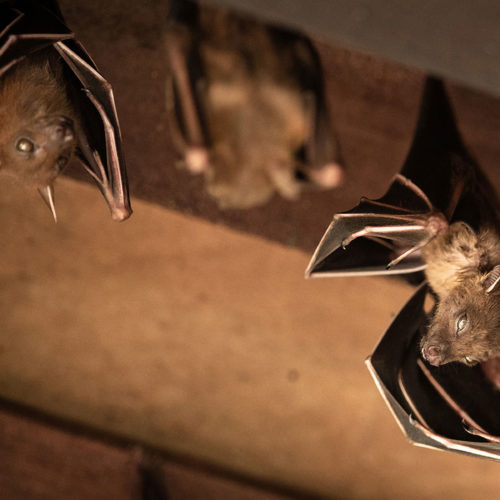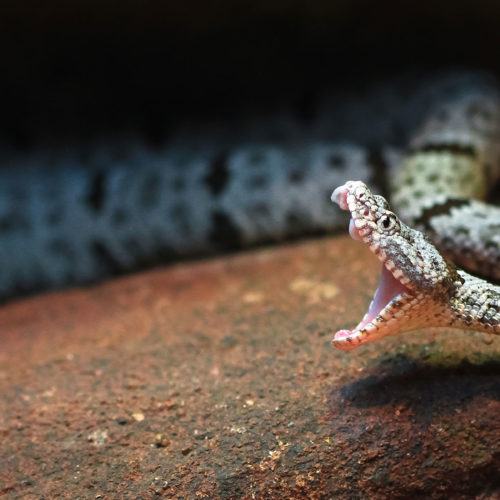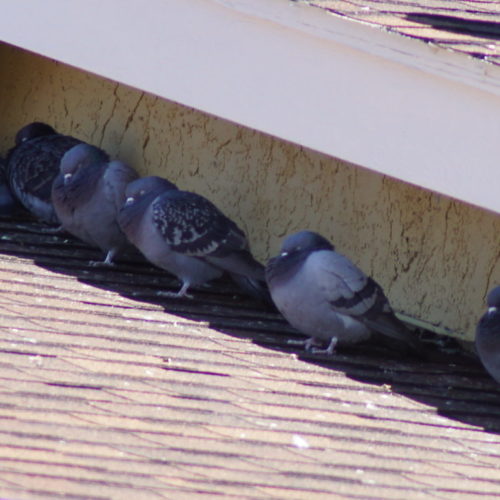
Raccoons

Squirrels

Bats

Rats & Mice

Snakes

Pigeons

Raccoons
Raccoons are excellent climbers and can easily scale trees, fences, or even areas on a house to access roofs and attic areas. They are cleaver and can find openings in vents, gaps in the eaves, or soffits. When house and building material is weakened by weather and time raccoons can tear holes into siding and roof decking. Attic and ceiling voids can provide warmth and protection for raccoon dens. Open chimney caps are a very common area for female raccoons to den when giving birth or raising newborns. Raccoons can also den under deck, patios and sheds. Beyond the damage raccoons can cause to insulation, electrical, and drywall, raccoon droppings and urine can carry many diseases. Raccoons themselves can also carry parasites. Having raccoons or raccoon den sites around your home can lead to dangerous situations.

Squirrels
There are many types of ground squirrels in Colorado and a handful of arboreal (tree) squirrels. Ground squirrels generally do not make their way into homes but can dig up yards and gardens. Burrow sites can be ideal areas for the spread of fleas, the fleas can transfer plague to pets or humans.
Tree squirrels are amazing climbers and can easily access the highest points of the house or building. If there are gaps in construction many times squirrels will chew holes into the building. Inside they will use insulation for nesting. Urine and droppings are generally distributed among damaged and flattened insulation. When squirrels are left in attic areas long enough they generally will start chewing into wires and can dig holes down into the drywall.

Bats
Bats can be very helpful in reducing flying insect populations, such as mosquitoes. When bats get into homes and businesses they can become not only a visual and olfactory nuisance but they can bring parasites like the bat bug and can be carriers of rabies. Bats can enter rooflines and soffits at gaps slightly larger than ¼ inch, depending on the species.
Most bats will return to Colorado in April-May depending on elevation and prevalence of insects as a food source. Maternal groups can number in the hundreds. Mothers will give birth in July- August.

Rats & Mice
Rats and Mice are some of the most prolific mammals in Colorado. These rodents have the adaptability to survive in many environments and live with and around humans. Often time these rodents are an unseen problem, with the only evidence of their infestation being droppings and noises coming from within wall spaces. Rats and mice can cause serious damage, annoying noises, bad odors, and can carry disease. It is highly recommended to get them removed as soon as possible and take steps to prevent reinfestation.

Snakes
Having snakes near your home can reduce rodent populations, but having snakes inside of your home can be both a nuisance and a danger. Unfortunately, Colorado has many rattlesnakes that can be very harmful to small pets, children, and adults. Quick remediation is highly recommended.

Pigeons
Pigeons are one of just three species not protected by the Migratory Bird Treaty Act of 1918 and can cause costly damage to homes. Pigeons can enter homes at eaves and will nest under solar panels. Droppings and nesting can accumulate and pose health risks so it is highly recommended to address the issue promptly.

